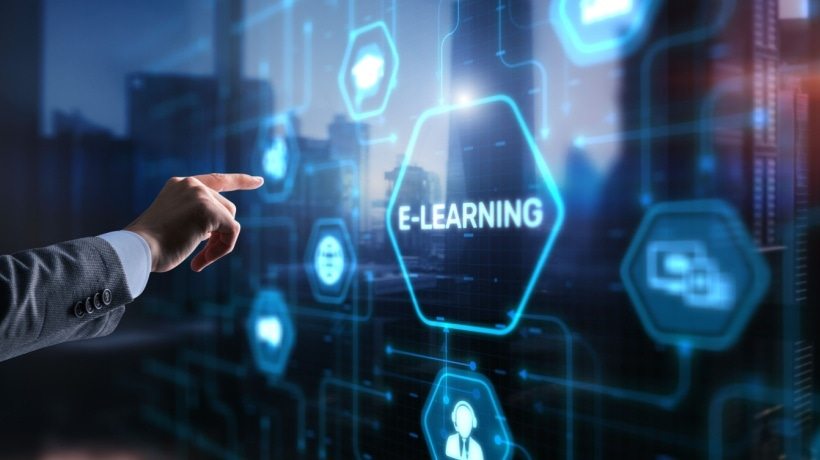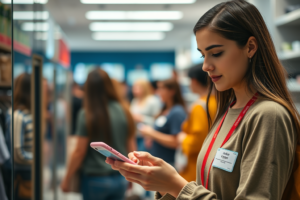
Special Education Technology: Beyond Textbooks

Tech That Empowers Learners With Special Educational Needs
When eight-year-old Aarav first joined school, he struggled every day. While his classmates quickly picked up reading, Aarav, who had dyslexia, found it nearly impossible to keep up.
Introduction: Why Students With Special Needs Deserve More
Traditional classrooms, with their rigid pace and one-size-fits-all lessons, left Aarav frustrated and feeling left behind. But everything changed when his parents introduced him to special education technology designed for children like him. With text-to-speech apps and interactive reading games, Aarav began to read with confidence, and for the first time, learning felt possible.
Stories like Aarav’s highlight why students with unique learning needs deserve more than what conventional systems can provide. For too long, their potential has been limited by outdated teaching models and inaccessible materials. But today, technology for special needs students is opening new doors by creating learning experiences that are personalized, engaging, and inclusive. These innovations are proving that education doesn’t have to stop at textbooks; it can be adaptive, flexible, and tailored to every child’s needs.
The Limits Of Traditional Classrooms For Students With Special Needs
Why One-Size-Fits-All Models Fail Learners With Unique Needs
In a traditional classroom, lessons are designed to move at a single pace, often leaving behind students with special needs. Some children may need extra time to process information, while others may require lessons presented visually or through hands-on activities. When teaching doesn’t adapt, these learners often feel isolated or discouraged.
Common Challenges: Pace, Accessibility, And Engagement
- Pace
Many children with learning differences struggle when the class moves too quickly, creating knowledge gaps that widen over time. - Accessibility
Physical, sensory, or cognitive barriers often prevent equal participation. For example, a child with visual impairments may lack accessible materials, or a student with dyslexia may be overwhelmed by text-heavy lessons. - Engagement
Traditional lecture-based teaching may not capture attention. Students with autism or ADHD, for example, often respond better to interactive and gamified approaches rather than passive note-taking.
The Need For Personalized Adaptive Learning Approaches
This is where personalized adaptive learning becomes a game-changer. Unlike rigid classroom structures, adaptive platforms analyze how each student learns and adjust the content accordingly. A child struggling with reading might get extra phonics exercises, while a faster learner moves ahead without waiting. This flexibility ensures that educational tools for special needs students don’t just supplement traditional learning but actually transform it into something more inclusive.
How Technology In Special Education Is Changing The Game
Personalized Adaptive Learning: AI-Driven Support
One of the biggest breakthroughs in technology in special education is the rise of personalized adaptive learning platforms. These AI-driven systems analyze each student’s strengths and struggles in real time, adjusting the pace, complexity, and type of content. For example, a child with dyslexia may receive phonetic-based exercises, while another with ADHD might be presented with bite-sized, gamified lessons to sustain focus. This ensures that every learner receives a customized pathway, rather than being forced into a rigid structure.
Educational Tools For Students: Learning Made Engaging
The digital shift has introduced a wide range of educational tools for students, from gamified apps that make math fun to digital flashcards that aid memory retention. Interactive platforms turn lessons into play, reducing anxiety and boosting motivation. For instance, apps with story-based learning allow children with autism to better understand social cues, while color-coded flashcards can help children with dyscalculia grasp numerical concepts.
Assistive Tech: Bridging Gaps In Communication And Learning
Special education technology also includes powerful assistive tools like speech-to-text for children with writing difficulties, text-to-speech for those with reading challenges, and visual learning platforms for students who process information better through images. These tools don’t just support learning; they give students alternative ways to express knowledge, ensuring their abilities shine even if traditional methods fail them.
How Can Technology Help Students With Special Needs? By Building Confidence And Independence
Perhaps the most inspiring impact of technology for students with special needs is how it empowers them with independence. Tools that read aloud instructions, apps that help organize tasks, or software that supports communication allow learners to participate more fully in classrooms. Beyond academics, these innovations nurture confidence, foster inclusivity, and prove that students with special needs are just as capable, when given the right support.
Real-World Examples Of Special Education Technology
Apps That Support Children With Dyslexia Through Personalized Reading Practice
For students with dyslexia, reading can often feel like climbing a steep hill. Today, apps powered by personalized adaptive learning make that journey smoother. Tools like reading practice apps break down words phonetically, highlight text as it’s read aloud, and provide repetition at the child’s own pace. This approach not only improves fluency but also rebuilds confidence for students who may otherwise feel left behind in traditional classrooms.
VR/AR Experiences That Help Autistic Students Practice Social Interactions
Social learning is often a challenge for students on the autism spectrum. Here, immersive technologies like Virtual Reality (VR) and Augmented Reality (AR) play a powerful role. Through special education technology, autistic students can practice everyday scenarios—like ordering food at a café or introducing themselves to a new classmate—in a safe, controlled environment. These simulated interactions reduce anxiety and prepare learners to apply these skills in real life.
Technology In Early Childhood: Building Foundations For Special Needs Learners
The impact of technology in early childhood education is especially transformative for children with special needs. Gamified tools, digital flashcards, and interactive storytelling apps are helping young learners build critical language, motor, and cognitive skills. For example, a preschooler with speech delays might use a speech-generating app to practice vocabulary, while another with ADHD may engage with short, colorful learning games designed to hold attention. These early interventions not only bridge developmental gaps but also lay the groundwork for lifelong learning.
Challenges And The Roadblocks Ahead
Affordability And Accessibility Of Technology For Special Needs Students
While technology for special needs students has opened doors like never before, affordability remains a pressing concern. High-quality tools such as speech-generating devices, VR headsets, or specialized software often come with steep price tags. In low-income communities, even access to a basic tablet or stable internet can be out of reach. Without addressing this digital divide, many children risk being excluded from opportunities that could transform their learning journey.
Teacher Training Gaps In Implementing Technology In Special Education
Even when schools manage to acquire technology in special education, the question often arises: are teachers fully prepared to use it effectively? Many educators feel undertrained in navigating AI-powered platforms, gamified apps, or adaptive learning systems. Without proper guidance, tools meant to empower students may remain underutilized or misapplied. Investing in professional development for teachers is as important as investing in the technology itself.
Balancing Digital Support With Human Connection
As powerful as special education technology is, it cannot replace the empathy, patience, and encouragement of a teacher, therapist, or parent. Students with special needs often thrive when technology supplements—rather than replaces—human connection. The key challenge is finding that balance: using digital tools to enhance learning, while still ensuring children feel understood, supported, and connected on a personal level.
The Future Of Technology In Special Education
The Rise Of AI-Powered Personalized Adaptive Tutors
The next decade will see personalized adaptive learning evolve far beyond what we know today. Imagine an AI tutor that not only adjusts the pace of lessons but also detects when a child is feeling frustrated or disengaged, then adapts with encouragement, visuals, or even a story to recapture attention. For students with special needs, such emotionally intelligent systems can provide tailor-made learning pathways that build confidence while ensuring no child feels left behind.
Low-Bandwidth And Vernacular-Based Educational Tools For Students In Rural Areas
Accessibility isn’t just about affordability; it’s also about availability. In many rural areas, internet connectivity is patchy at best. The future of educational tools for special needs students lies in low-bandwidth apps and offline-first solutions that work even without constant internet. Add to this vernacular support—content available in regional languages—and suddenly, a child with dyslexia in a village school can have the same opportunities as one in a city classroom. This shift could democratize access to technology in special education like never before.
A Future Where Inclusion Is The Norm, Not An Exception
The ultimate goal of special education technology isn’t just about tools—it’s about changing mindsets. We’re moving toward a world where classrooms won’t need to label learners as “special” or “different” because inclusive design will already be baked into education systems. From AI-driven reading assistants to VR-based social interaction training, the future points to a society where students with special needs are empowered, independent, and celebrated for their unique strengths.
Conclusion: Unlocking Potential With Special Education Technology
In the beginning, we met a child who struggled in a traditional classroom but flourished with the right special education technology. That story isn’t an exception—it’s a glimpse into what’s possible when we blend compassion with innovation.
The promise of technology in special education is not about replacing teachers or diluting the human connection that makes learning meaningful. Instead, it’s about equipping educators with smarter tools, giving parents hope, and most importantly, offering students with special needs the same opportunities to learn, grow, and dream as anyone else.
As we look to the future—with personalized adaptive learning, inclusive educational tools for special needs students, and AI-driven innovation—the message is clear: every learner deserves a fair chance to shine. And with the right balance of human empathy and digital support, we can make that vision a reality.
Further Reading:
Source link



